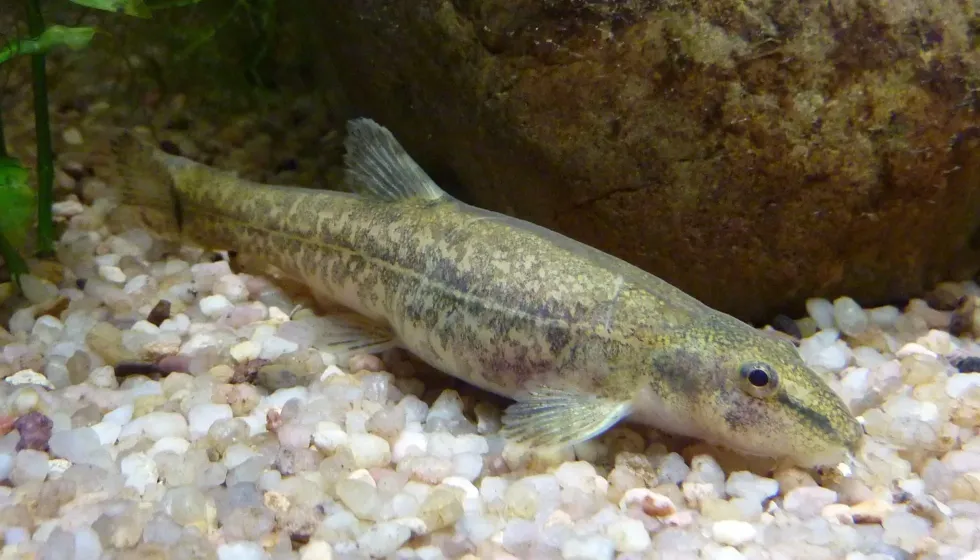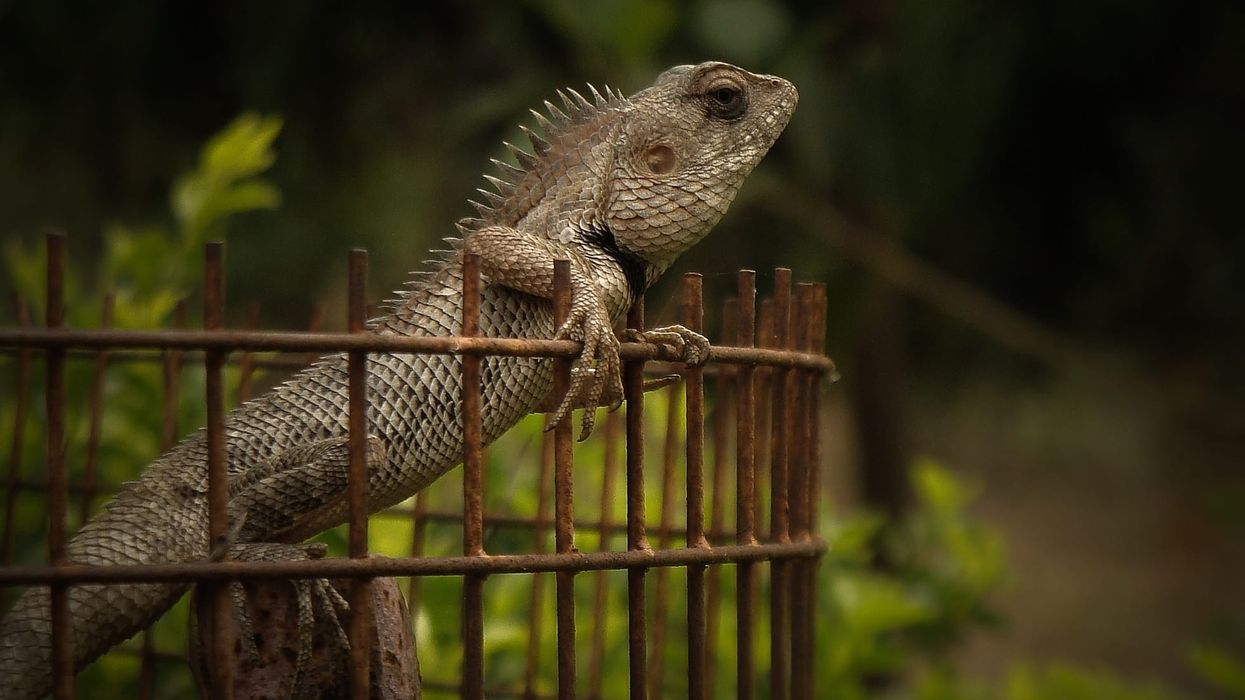Stone loach (Barbatula barbatula) is a fish belonging to the family Nemacheilidae. It is endemic to the continent of Europe and is found abundantly in a host of countries which include Great Britain, Sweden, and Poland.
It has also been introduced to countries outside of Europe like China and Japan and is now found all over the world. It is a small, mostly brown-colored fish that has dark blotches on its body.
Its most noteworthy feature is the three pairs of barbels near its mouth which come in use for detecting prey like insect larvae and small invertebrates.
The stone loach requires a habitat of very clear waters of rivers and streams with sandy bottoms or gravel. Even slight pollution is not tolerated by it.
It faces predation from species like seals, sea lions, finfish, and bony fishes. The stone loach has been given the status of Least Concern by the IUCN because of its wide geographic range and abundant numbers.
For more relatable content, check out these rainbow cichlid facts and x-ray tetra facts for kids.
Stone Loach Interesting Facts
What type of animal is a stone loach?
The stone loach (Barbatula barbatula) is a fish.
What class of animal does a stone loach belong to?
The stone loach (Barbatula barbatula) belongs to the Actinopterygii (ray-finned fish) class of animals.
How many stone loaches are there in the world?
It is unclear exactly how many stone loach fish are there in the world. This is because they occur abundantly within their habitat range and they do not have any major threats to their population.
Where does a stone loach live?
The stone loach (Barbatula barbatula) is found in a number of countries in Europe which includes the Baltic states and eastern Europe.
The countries that the stone loach is found are Austria, Bulgaria, Belgium, Czech Republic, Finland, Denmark, Germany, France, Ireland, Hungary, Liechtenstein, Italy, Moldova, Luxembourg, Poland, the Netherlands, Romania, Poland, Montenegro, Serbia, Slovenia, Slovakia, Sweden, Switzerland, Spain, and the United Kingdom.
The stone loach has also been introduced to Japan, China, North Korea, Ukraine, South Korea, and Russia.
What is a stone loach's habitat?
Stone loaches are found in clear waters of rivers and streams with sandy bottoms and gravel. Upland areas, lakes, chalk streams, and reservoirs also have abundant amounts of stone loaches. They require their rivers to be well oxygenated.
Stone loaches are also seen in estuaries sometimes, but never in brackish water. Stone loaches are benthic and they prefer the bottom, sometimes partly buried. This is because they need to root around in the gravel and sand at night to get food like small invertebrates.
Stone loaches have to inhabit clear, unpolluted, and stony waters.
Who does stone loach live with?
Stone loaches are seen living alone, with other fish, or in pairs during the mating season.
How long does a stone loach live?
A stone loach (Barbatula barbatula) usually lives for three to four years, but five-year-old fishes have also been seen.
How do they reproduce?
Stone loaches reproduce by spawning and egg-laying. Surfaces over gravel, aquatic vegetation, and sand are chosen for breeding purposes. The eggs are released into open waters close to the surface by females.
The eggs stick to the substrates and get covered by detritus or sand. Spawning may go on for short periods each day in the breeding season. In Great Britain, the spawning season lasts from April-August and up to 10,000 eggs are laid by females.
What is their conservation status?
The conservation status of the stone loach species according to the International Union for Conservation of Nature is Least Concern.
Stone Loach Fun Facts
What does stone loach look like?
The stone loach is a slender, rounded, smooth, and small fish. Its length is usually 2.4-4.7 in (6-12 cm) but it may also grow to be 5.9 in (15 cm) long and the maximum length recorded has been 8.3 in (21 cm).
It is a mottled olive-brown color and its belly is grayish. One of the most prominent features is the three pairs of 'barbels' around the mouth, on the lower jaw.
There are no spines beneath the eyes of the stone loach. The dorsal fins are rounded and the caudal fins have slightly notched tips.
The overall color of the stone loach can be described as yellowish-brown. The fins have a dark banding that is faint and are brownish in color.
It has small eyes atop the head and a dark line joins the snout and the eye. The body also has darker-colored vertical bands and many dark blotches.
There is some sexual dimorphism with the female being slightly larger than the male. The female also possesses a rounder abdomen and body

How cute are they?
Stone loaches are kinda cute animals. They are small and smooth and a neutral brown color. Their snouts aren't that good-looking with the six unsavory-looking barbels. They do have almost patterned dark blotches on their bodies and a grayish belly that adds some personality to their appearance. They also make mild pet fish.
How do they communicate?
Like most fishes, stone loaches may communicate via motion and gesture. Barbels around their mouths come in handy for detecting prey.
How big is a stone loach?
A stone loach is usually 2.4-4.7 in (6-12 cm) long which makes it about two to five times bigger than a black phantom tetra.
How fast can a stone loach swim?
The swimming speeds of the stone loach have not been adequately researched but they can survive in faster currents with ease.
How much does a stone loach weigh?
A stone loach usually weighs 0.1-0.2 oz (3-6 g), but fishes that weigh up to 0.7 oz (20 g) have also been observed.
What are the male and female names of the species?
Males and females of the stone loach species do not have specific names.
What would you call a baby stone loach?
A baby stone loach would be called a larva, a juvenile, or a fry before it reaches maturity.
What do they eat?
The stone loach diet consists of mayfly larvae, freshwater shrimps, small invertebrates, gammarids, chironomids, zoobenthos, and insect larvae.
They have predators such as finfish, bony fishes, seals, and sea lions.
Are they aggressive?
No, stone loaches aren't aggressive at all. The stone loach, in fish tank settings, is a peaceful animal.
Would they make a good pet?
They do make good pets. A decent rate of flow, ample oxygenation, fine sand substrate, round pebbles, and bogwood and slate shelters, and bright lights should be provided in the tank.
Frozen foods like daphnia, brine shrimp, and bloodworms, sinking food, as well as live foods that dwell on the bottom, can be provided to stone loaches. A pH of 6-7.5, GH (general hardness) of 12, and temperatures of 57.2-64.4ºF (14-18°C) should be maintained in a stone loach aquarium.
Did you know...
Loaches are very hardy fish in general. They are often seen using their barbels to locate prey. They are also known to take in air from the surface when in stagnant and low ponds.
Fishes of the family Nemacheilidae are sometimes referred to as stone loaches too.
Naming the stone loach
The binomial name of the stone loach, Barbatula barbatula, comes from the Latin 'barba' which translates to 'beard', clearly a reference to the whisker-like barbels it has around its mouth.
What is the biggest loach?
There are at least two species that can lay claim to being the largest loach, the royal clown loach and the Triplophysa siluroides stone loach.
The royal clown loach species can reach a length of 1.6 ft (50 cm) and can weigh up to 6.6 lb (3 kg). Whereas the Triplophysa siluroides stone loach species can weigh 3.3 lb (1.5 kg) and measure 1.6 ft (50 cm) in length too.
The stone loach size 2.4-4.7 in (6-12 cm) is way smaller than both these species.
Here at Kidadl, we have carefully created lots of interesting family-friendly animal facts for everyone to discover! For more relatable content, check out these skate fish facts and drum fish fun facts pages.
You can even occupy yourself at home by coloring in one of our free printable stone loach coloring pages.









